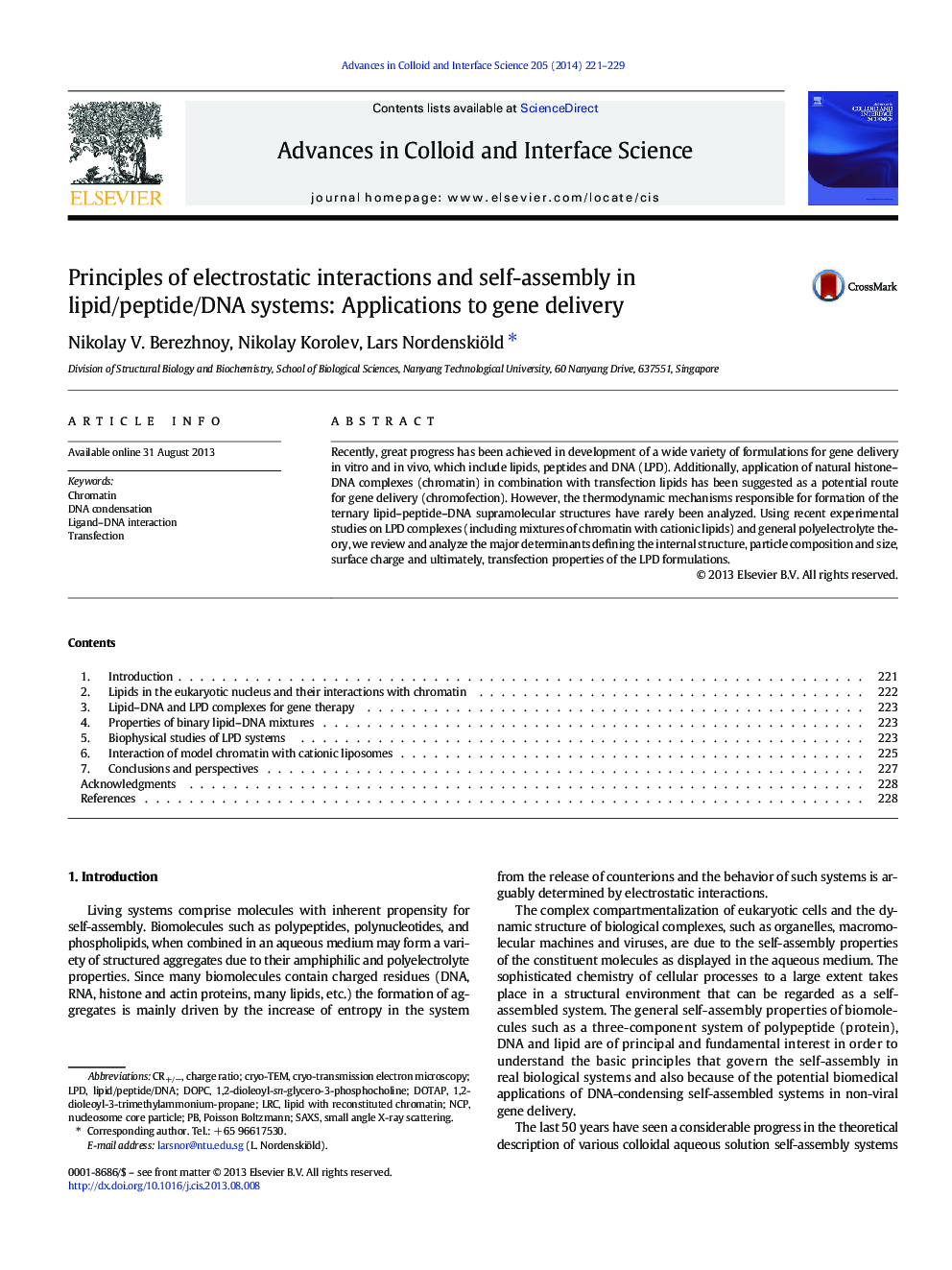| Article ID | Journal | Published Year | Pages | File Type |
|---|---|---|---|---|
| 590738 | Advances in Colloid and Interface Science | 2014 | 9 Pages |
•We review self-assembly in systems of cationic lipids, peptides and DNA (LPD).•We analyze the determinants of supramolecular structure of LPD complexes.•The analysis suggests a novel strategy for in vivo delivery using LPD complexes.
Recently, great progress has been achieved in development of a wide variety of formulations for gene delivery in vitro and in vivo, which include lipids, peptides and DNA (LPD). Additionally, application of natural histone–DNA complexes (chromatin) in combination with transfection lipids has been suggested as a potential route for gene delivery (chromofection). However, the thermodynamic mechanisms responsible for formation of the ternary lipid–peptide–DNA supramolecular structures have rarely been analyzed. Using recent experimental studies on LPD complexes (including mixtures of chromatin with cationic lipids) and general polyelectrolyte theory, we review and analyze the major determinants defining the internal structure, particle composition and size, surface charge and ultimately, transfection properties of the LPD formulations.
Graphical abstractFigure optionsDownload full-size imageDownload as PowerPoint slide
